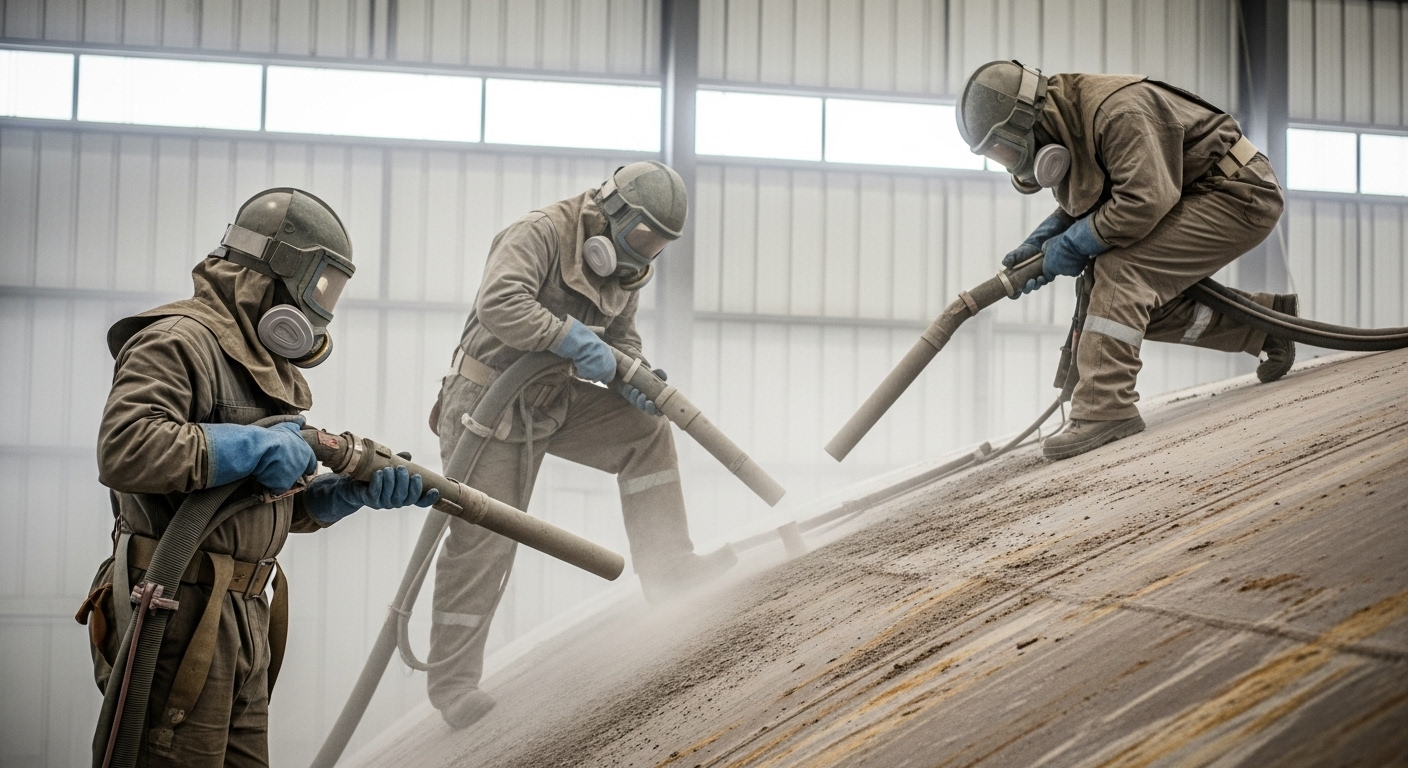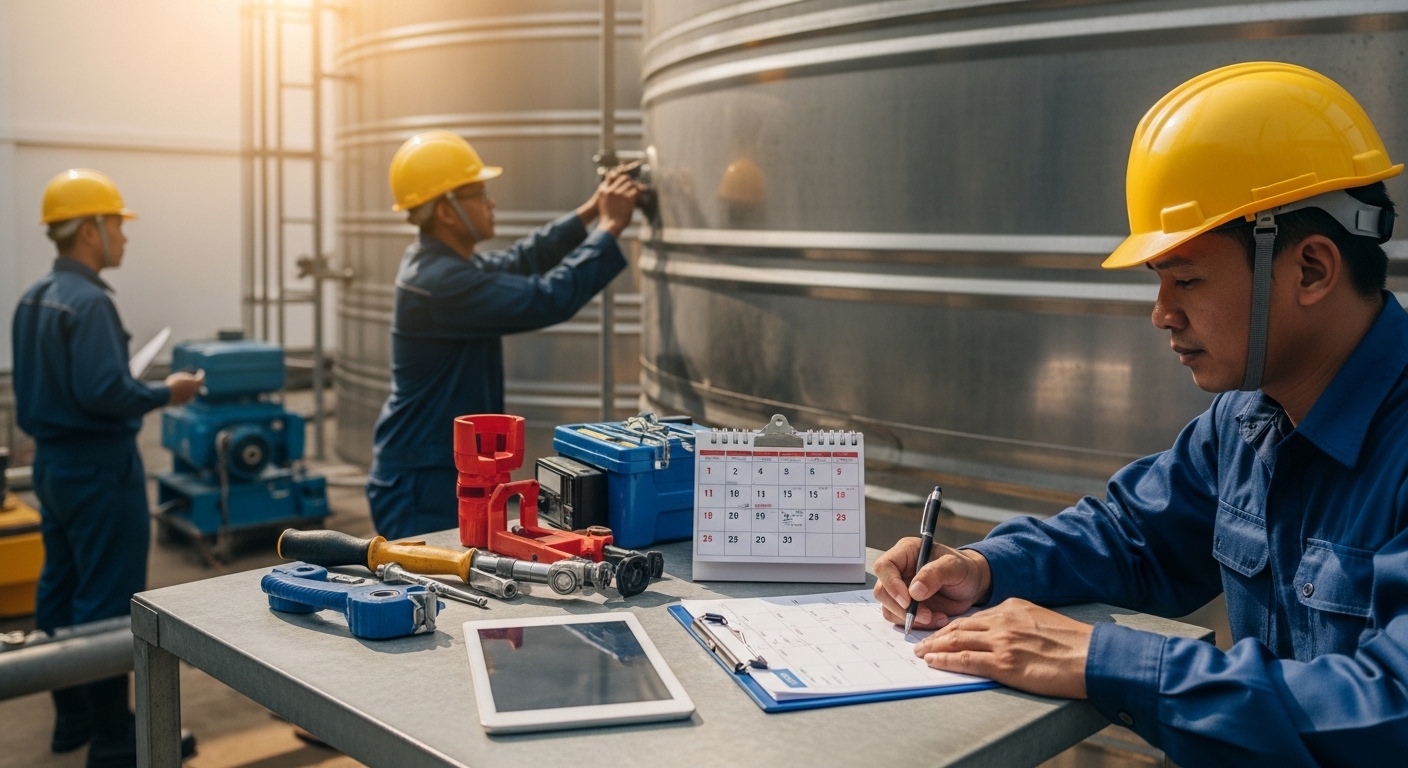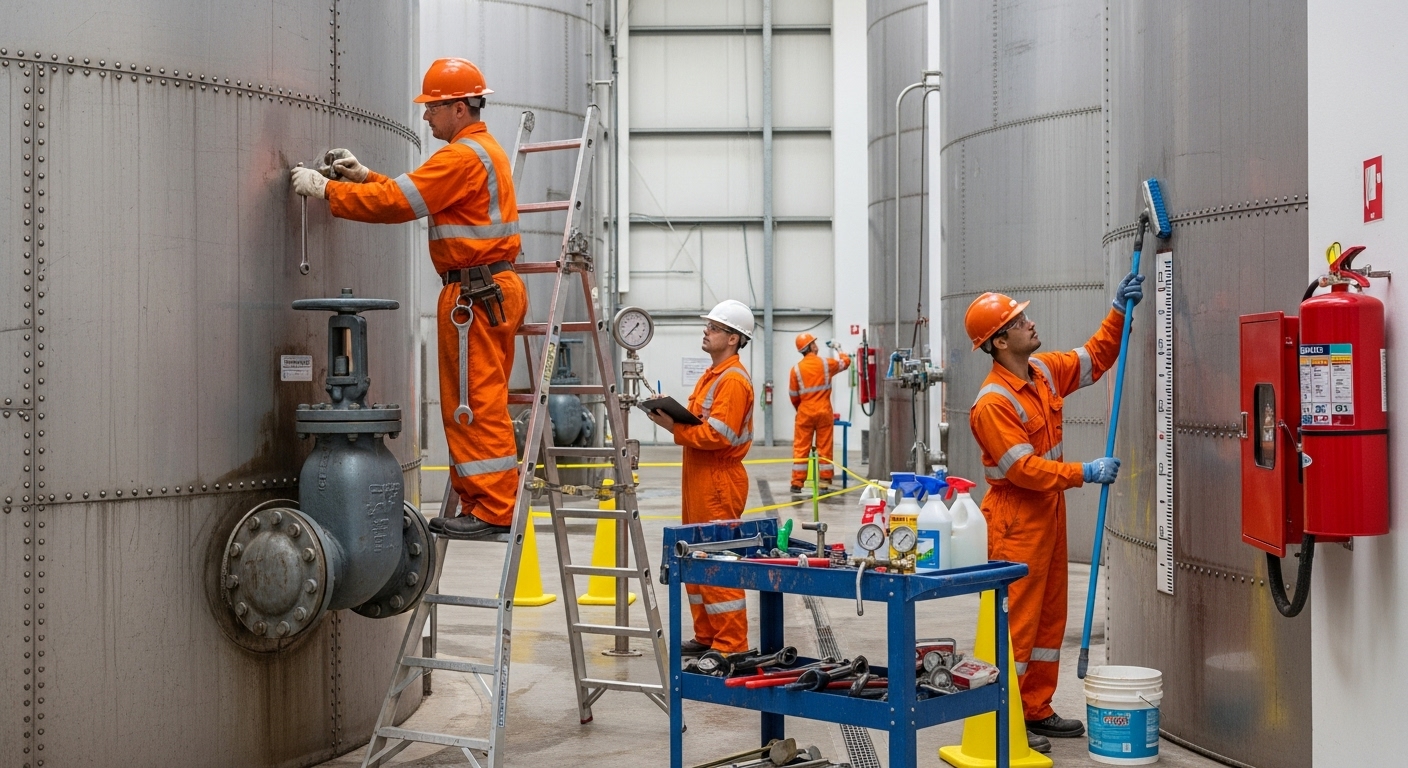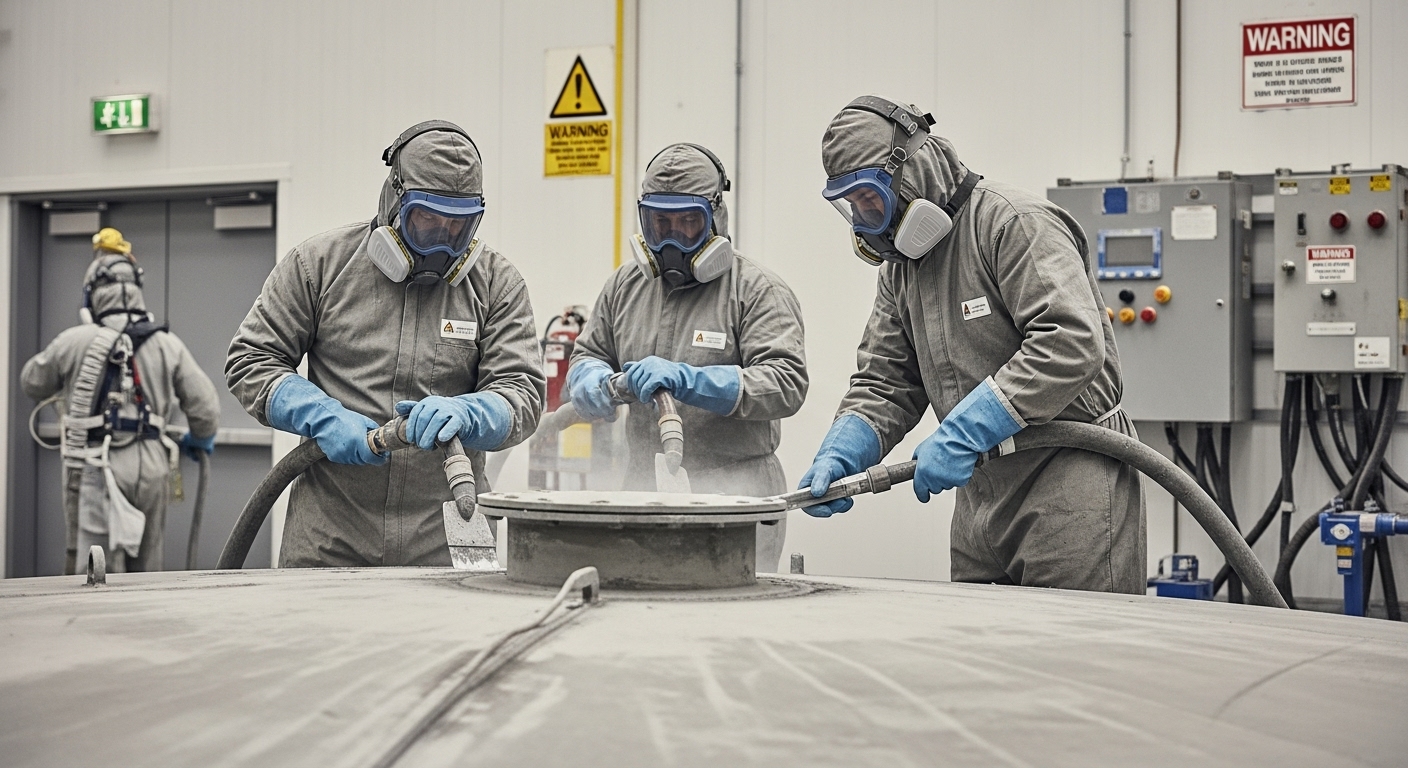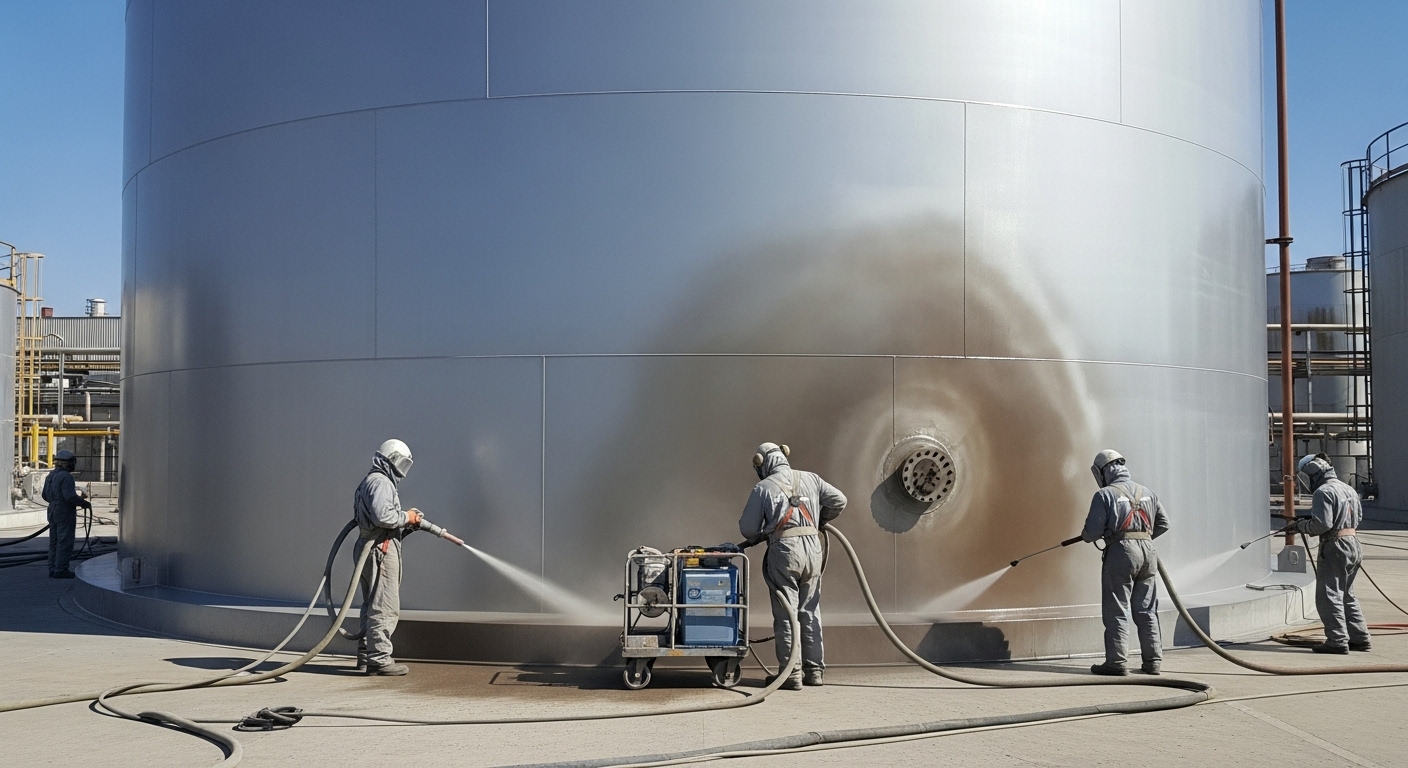When people think about maintaining a water tank, they often imagine a simple coat of paint. But the truth is, what happens beneath that paint—sandblasting and preparation—determines how long the structure will last. The process isn’t just about appearance; it’s about protecting a vital resource: safe, clean water.
And while it’s tempting to look at water tank sandblasting cost as just another line item, the reality is more complex. Every dollar spent is tied to safety, durability, and long-term savings. In this guide, we’ll break down the factors that shape sandblasting expenses, from surface preparation costs to tank cleaning costs and the often-overlooked details like containment and disposal.
You’ll also learn why the cheapest bid isn’t always the smartest investment, and how to evaluate the total project investment with future savings in mind. By the end, you’ll have a clear picture of what goes into pricing—and what that means for your budget and your tank’s lifespan.
Understanding The Basics of Water Tank Sandblasting Cost
Let’s start with the big question: what actually drives water tank sandblasting cost? Unlike a flat-rate service, sandblasting costs vary widely depending on tank size, location, condition, and the type of blasting required. A small ground-level tank with light rust removal will cost significantly less than a large elevated tower that requires full containment and complex rigging.
Another key factor is compliance. Projects that follow strict environmental and safety rules often involve higher costs, but skipping them puts communities at risk. That’s why it’s essential to look beyond the sticker price and consider the bigger picture—safety, quality, and durability.
This is where a transparent breakdown of costs helps owners make informed decisions. Instead of just asking “How much?” it’s about asking “What am I paying for?” and whether it’s setting the tank up for success in the decades ahead.
Key Sandblasting Price Factors That Shape the Final Budget
The biggest variable in sandblasting price factors is the tank’s condition. A tank with peeling paint and heavy rust will require more aggressive blasting, more abrasive media, and more labor hours than one in good shape.
Accessibility also plays a role. Elevated towers often require scaffolding, lifts, or rigging, which adds to costs. Location matters too—urban sites may require containment systems to prevent dust and debris from affecting nearby homes or businesses, leading to higher containment pricing.
Labor is another driver. Skilled sandblasting professionals are essential, and labor cost factors reflect both expertise and safety measures, such as working in confined spaces or at height. Add to that equipment costs for compressors, blasting rigs, and safety gear, and it’s easy to see how the budget can rise quickly. Each of these factors builds the framework of your total project investment.
Breaking Down Surface Preparation Costs: Why It’s More Than Just Blasting
Here’s the thing: sandblasting alone doesn’t define surface preparation costs. True preparation includes everything from tank cleaning costs before blasting to inspecting for damage, repairing weak spots, and ensuring compliance with surface cleanliness standards.
This is where professional contractors emphasize the value of preparation. Skimping here often leads to coatings failing prematurely, which can double or triple overall costs when a full repaint is needed far earlier than expected.
Contractors also factor in substrate preparation and surface contamination removal, both of which are critical for long-lasting results. It’s not just about blasting steel—it’s about creating the perfect surface for coatings to adhere, ensuring long-term maintenance savings. That’s why preparation often feels like a hidden cost, but in reality, it’s the smartest investment you can make.
Evaluating Abrasive Blasting Pricing and The Role of Media Selection
Different abrasives create different outcomes, and they also carry different price tags. Abrasive blasting pricing depends heavily on the type and amount of blast media used. For example, steel grit may be reused multiple times but costs more upfront, while garnet or aluminum oxide may be cheaper initially but require higher volumes.
This decision isn’t just financial—it directly affects coating adhesion preparation. If the surface profile is too shallow, coatings won’t bond properly. If it’s too aggressive, steel can weaken over time. That balance is why blast media costs must be factored into the overall budget.
It’s also important to consider disposal considerations. Some media leave behind more waste, requiring specialized disposal methods to meet environmental regulations. These costs are often hidden in the fine print, but they can make a big difference when comparing quotes.
Hidden Tank Cleaning Costs and How They Impact the Bottom Line
Before blasting starts, tanks often need deep cleaning to remove sludge, biofilm, or chemical residue. These tank cleaning costs vary depending on the tank’s history and condition. A neglected tank that hasn’t been cleaned in years may require extensive work, adding significant expense.
Cleaning also plays into dismantling cost comparison. If a tank is too deteriorated, sometimes dismantling and rebuilding are considered. While this sounds drastic, it’s important to compare the long-term cost of endless repairs to the price of starting fresh.
Ultimately, cleaning isn’t an optional add-on—it’s an essential step. Skipping it not only compromises blasting but also risks contamination, safety violations, and higher costs down the line. Factoring cleaning into the project budget ensures no surprises once the work begins.
Considering The Total Project Investment: Beyond Upfront Costs
Many owners make the mistake of focusing only on upfront pricing without considering the total project investment. A cheaper bid may look appealing but often comes with shortcuts—lower-quality blasting, skipped containment, or insufficient prep—that reduce coating life and increase future costs.
When evaluating quotes, ask contractors to outline not just blasting and coating but also equipment costs, disposal considerations, and labor cost factors. This transparency helps identify whether the bid covers everything or if hidden costs will surface later.
Remember, the true cost of sandblasting isn’t just what you pay today—it’s the savings or expenses you’ll face years from now. Investing in high-quality preparation and application almost always pays off through reduced maintenance and fewer repaint cycles.
Long-Term Value: Calculating Maintenance Planning and Savings
One of the biggest advantages of proper sandblasting and coating is reduced upkeep. With strong preparation and durable coatings, tanks may go 20–25 years before needing another major overhaul. Poor preparation, on the other hand, may require repainting in less than 10.
That’s why factoring in long-term maintenance savings is critical when budgeting. Spending more upfront often leads to significant lifecycle savings, freeing up funds for other infrastructure needs. Professional contractors often provide detailed maintenance planning documents that outline inspection schedules and re-coating timelines.
By following these plans, owners not only maximize their investment but also ensure tanks remain safe, compliant, and reliable for decades. That’s the real return on a sandblasting project—long-term value, not short-term cuts.
Making Smart Choices About Sandblasting Costs
Evaluating water tank sandblasting cost is about more than comparing numbers on a page. It’s about understanding what goes into each estimate, from sandblasting price factors to tank cleaning costs, and how those decisions affect the future of your infrastructure.
When you look at the bigger picture—the total project investment, potential long-term maintenance savings, and the hidden risks of cutting corners—the smart choice becomes clear: invest in preparation and quality upfront. Not only will this extend the life of your tank, but it will also protect your community’s water supply and budget for years to come.
Ready to make the right call for your water storage system? Don’t leave it to guesswork. Calculate Your Sandblasting Investment today and take the first step toward long-lasting protection, safety, and peace of mind.


